Embracing change pays off
Cast your mind back to your first mobile phone. It was probably a big deal at the time. But next to what’s in your pocket today, that first phone was a tin can tied to a piece of string.
Every phone between then and now, you’ve had to do things a bit differently to make it work the way you want. And that’s fair, right? Upgrades bring complexity, but in return they give us cool new features.
As with phones, so too pasture.
This is a story about how farmers like you are doing things a bit differently to make a (very) upgraded ryegrass work the way they want, and finding themselves able to consider new business opportunities as a result.
Let’s start in coastal South Taranaki…
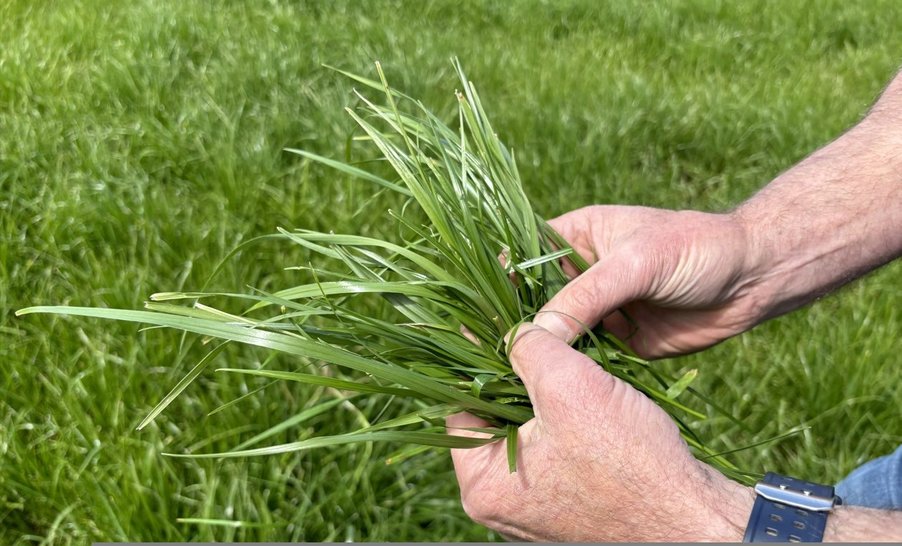
‘I see it changing what I do’
Trying new things is part and parcel of farming for Jarrod Murdoch at Waverley.
When he wanted a crop that would hold on longer than turnips for milking feed in late summer and autumn, with less disease pressure, he started using Robbos fodder beet several years ago. It worked so well he’s still doing it today.
Two years ago, he changed from twice a day to once a day milking for his herd of 300 cows, and his only regret is not doing it sooner. Simultaneously, he pivoted from intensive, high input, high production farming back towards a more grass-based approach.
Cows were collared for health, ID and fertility monitoring mid 2020; reproduction is up, stress is down, and the whole system is simpler and more robust.
Always a priority, pasture persistence on his rolling, free-draining land is now even more important under the new regime. So when Jarrod got a chance to try Array NEA2 perennial ryegrass before it was released, he grabbed it.
There was just one challenge…
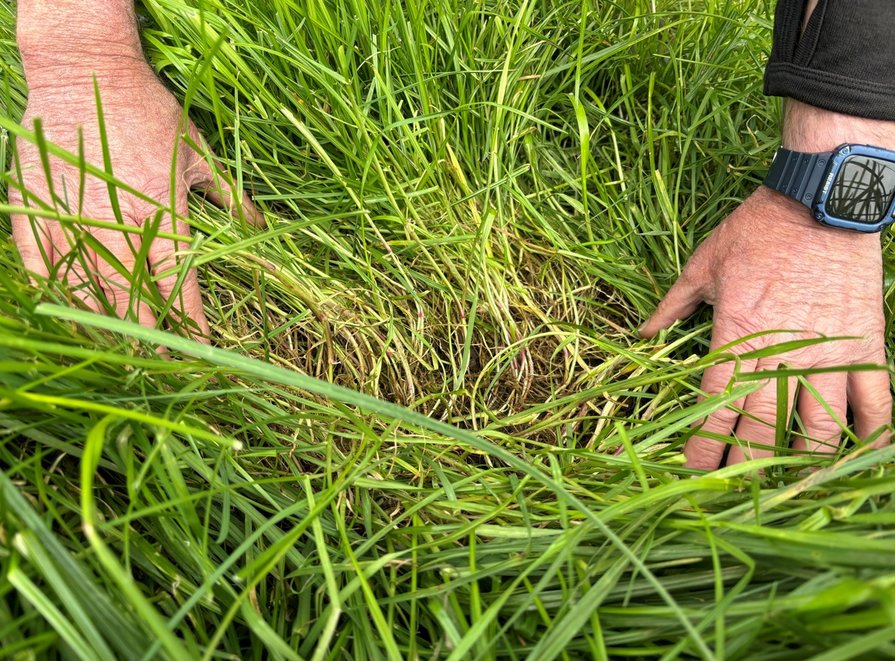
‘It yields higher than it looks’
Like many farmers, Jarrod had got used to the fact that he could drive round the farm, look over the fence, and know how much was growing in each paddock.
It didn’t take long to realise Array was tricking him. The amount he thought he saw growing, and the amount actually available for grazing, were two quite different things. The cows gave it away – they were leaving too much behind.
Now Array is grazed four to five days earlier than other paddocks, and if need be, he’ll cut if for silage.
Did having to adjust his management put him off? “No. It made me consider what my options are with it.
“If I had the whole farm planted in it, I could run a higher stocking rate, or keep going back to a more pasture-based system. For me, it probably leads back to feeding more pasture and less supplements.”
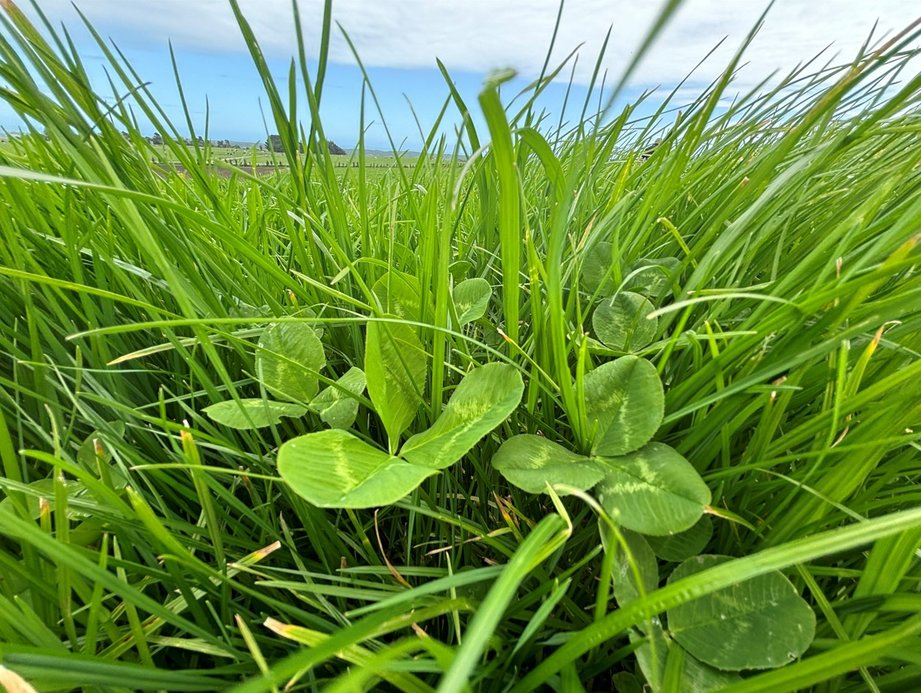
Not like other diploids
Ninety kilometres away, on flat heavy soils in the shadow of Mt Taranaki, paddocks of Array are thriving under a 2.5 metre annual rainfall, and 450 cows on a grass-first diet.
Chris Knowles estimates they’re growing 20% more than his other pastures and, like Jarrod, says the logical outcome of that, if he had more of them, would be dialling back on supplements.
Half the Tariki farm was in tetraploids when Chris took over. But those are gone now in favour of diploids, which cope better in his climate under high System 3 management.
Initially interested in Array’s density, he and his team quickly found the cows wouldn’t eat it down to the right residual if they grazed it at the same time as other diploids.
“Next to a paddock of Governor AR37, if you shut them both up at the same time, it looks the same length, but because it’s so dense there is close to 20% more pasture there.”
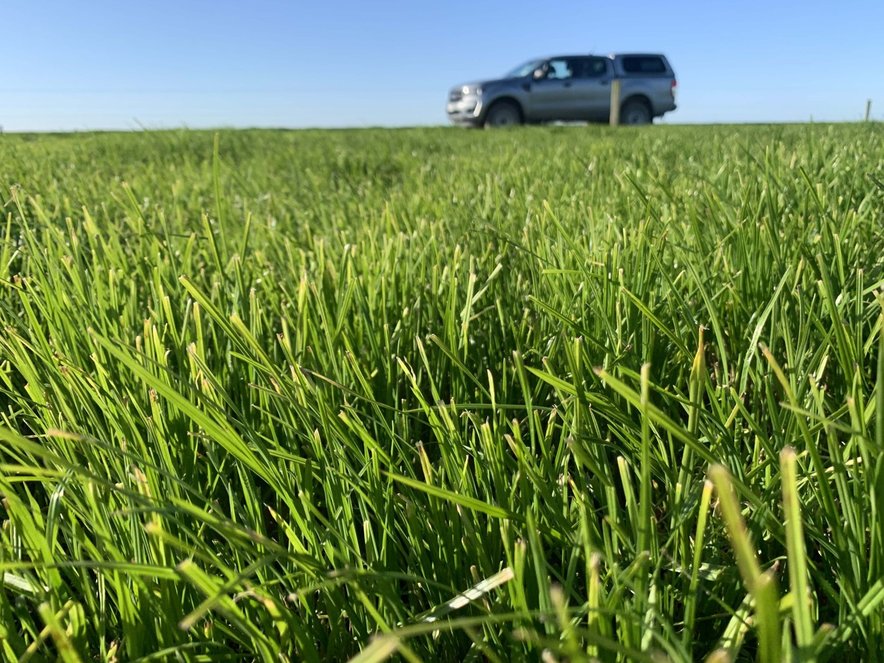
‘That density is a good thing’
Two seasons and many more hectares of Array later, they’ve embraced the difference, making sure the cows go in four to five days earlier each time.
“Because we know what it does, we treat those paddocks a bit differently from the rest of the farm. They’re measured separately with a plate meter, so we know what’s actually growing there and we can train our eye. By the end of this season we’ll have some good data recorded.”
It’s a small change to capture what Array has to offer, Chris says, and he’s ‘definitely’ happy to continue with it.
“That density is a good thing for us! It’s less likely to get damaged in our conditions.”
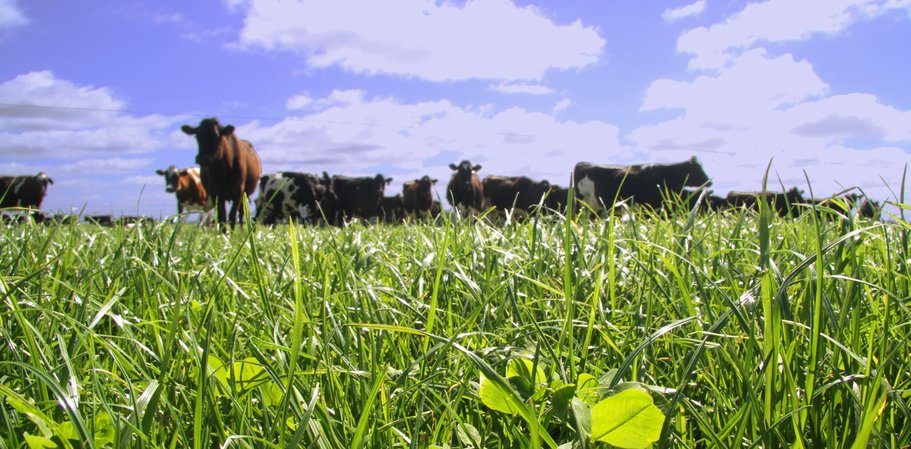
Some things never change
Just like Array itself, there’s more to this story than first meets the eye.
Yes, we are talking about adapting to upgraded pasture technology to advance your business.
But what these examples also remind us is that absolutely nothing influences the success of our pasture systems more than how much grass is in the paddock every time your animals go into it, and how much they leave behind.
Even better, these are principles you can apply right now, to any pasture, without spending a cent, to make your farm perform better.
We’re here to help, as always. Book your free personal Pasture Health Check today.


